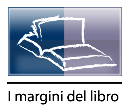 |
11, 2017 | |||
| Abstracts | versione italiana | |
| Saggio |
Marta Baiardi
Le tavole del ricordo. Shoah e guerre nelle lapidi ebraiche a Firenze e dintorni.
Parte I. «Nel recinto del Tempio»
The many stone plaques to be found on our cities’ walls constitute a palimpsest where remarkable fragments of our history live on. The present essay is focused on these documentary signs, which often remain obscure or poorly understood. Our aim here is to focus on the Jewish epigraphs in Florence related to the twentieth-century wars and the Shoah. A study of this particular kind of inscription allows us to reconstruct not only the background and social dynamics of a vibrant and dynamic Jewish community, but also its complex interaction with the surrounding community, brought into focus under the lens of local history. We start by examining plaques and monuments in honour of Jewish soldiers who lost their lives in the First World War, and then we move on to explore the contradictory “stone pages” written by Florentine Jews under Fascism. Finally we investigate the postwar inscriptions that record the break with civilization caused by the Holocaust and bear witness to the suffering of a depleted Jewish community: a community severely disrupted but alive and active in coming to terms with its great loss and in reconstructing a new identity. In this first part of the essay we explore the commemorative plaques situated within the monumental complex of the Synagogue of Florence.
| versione italiana |
| Saggio |
Andréa Doré
Vendre le monde: les préfaces des cosmographies à la Renaissance
This article presents cosmographic texts, abundant in the sixteenth century, as a literary genre that follows conventions and establishes conceptions on Earth. By analyzing prefaces and letters to the reader, this study emphasizes two aspects. The first puts into question the complementary character attributed to History and Geography, as formulated by Abraham Ortelius in the epigraph of his Parergon − «Geography is the eye of history». This relationship becomes fundamental at a time when new lands and their inhabitants are reached by Europeans. The second aspect develops the adoption of the topos of the utility of the subject of the book, a Ciceronian precept followed by cosmographers. The authors try to convince readers of the utility of knowledge about the world, neighbouring peoples and remote lands. This knowledge about the world is offered to them in the safety and comfort of their houses by reading reports, descriptions and maps gathered by cosmographers. The prefaces have been studied as rhetorical documents, a rite of passage or a liminal text, but are also considered as a place where the birth of modernity manifested itself.
This article is the result of a broader research based on a significant number of cosmographic texts. I have considered canonical works such as Sebastian Münster, Pierre Apian and Abraham Ortelius, as well as less widely used texts, such as those written by William Cuningham, Giuseppe Rosaccio, Pieter Heylyn, Chauteaunieres de Grenaille, Ieronimo Girava, among others.
| versione italiana |
| Saggio |
Vincenzo Vitale
La chiave della dedica: Alfonso duca di Calabria Anticristo in una novella di Masuccio
The essay offers the analysis of the first version of the second tale of Masuccio’s Novellino. The tale is dedicated to Alfonso Duke of Calabria, first son of the king of Naples Ferrante of Aragon. The main character is the Dominican friar Giovanni da Pistoia, a historical monk who frequented the aragonese court of Naples. In Masuccio’s tale fra Giovanni seduces a naïve Bavarian aristrocat − Barbara, the daughter of the Duke of Landshut − and convinces her that she has been chosen by God to conceive a new − the fifth − evangelist. Starting from the assumption that Masuccio’s tales reflect the biography of their dedicatees, the essay shows that the narration contains hidden allusions to the queen of Naples Isabella Chiaramonte and to the son, heir to the throne of Naples, Alfonso Duke of Calabria. The analysis of the subtle implications between dedication and story allows us to put forward also a new hypothesis about the date of the tale’s composition and of its first circulation.
| versione italiana |
